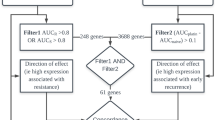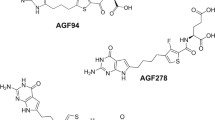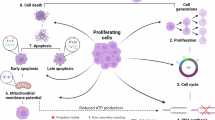Abstract
Flow cytometry has enabled the objective assessment of cellular morphology and activity, which can also be biochemically evaluated by measuring products of cellular metabolism, such as cyclic 3'5' guanosine monophosphate (cGMP). Using paraffin-embedded formalin-fixed material obtained from the primary operation, an analysis of the correlation between nuclear ploidy and the proliferative index (PI) as quantified by flow cytometry with pre-treatment urinary cGMP was performed in 40 epithelial ovarian cancer (EOC) patients. The majority of the study group had advanced disease (28 FIGO III/IV) and residual disease (31). All but three (stage I) patients received single agent high dose cisplatinum as first-line therapy (100 mg m-2 x 5); in patients with evaluable disease there was a response rate of 64%. Thirty-one patients have died; the median survival of the study population being 27 months. There was a significant association between cGMP and PI. Significantly more aneuploid tumours had elevated PI values (P = 0.02). No variable predicted response. An initial univariate log rank analysis identified stage, the amount of residual disease, cGMP and PI as prognostic factors. Because of the interrelation between these and other factors and because PI did not conform to the proportional hazards model, a multivariate stepwise discriminant analysis was performed using survival at 36 months (the minimum follow-up for surviving patients) as the end-point. On the basis of this analysis, stage and residual disease were the most important prognostic factors, but cyclic GMP continued to have prognostic value even when these other factors were entered into the predictive model. However, the additional information gained has little clinical relevance.
This is a preview of subscription content, access via your institution
Access options
Subscribe to this journal
Receive 24 print issues and online access
$259.00 per year
only $10.79 per issue
Buy this article
- Purchase on SpringerLink
- Instant access to full article PDF
Prices may be subject to local taxes which are calculated during checkout
Similar content being viewed by others
Author information
Authors and Affiliations
Rights and permissions
About this article
Cite this article
Redman, C., Finn, C., Ward, K. et al. Tumour cell activity markers in epithelial ovarian cancer: are biochemical and cytometric indices complementary?. Br J Cancer 61, 755–758 (1990). https://doi.org/10.1038/bjc.1990.168
Issue date:
DOI: https://doi.org/10.1038/bjc.1990.168



